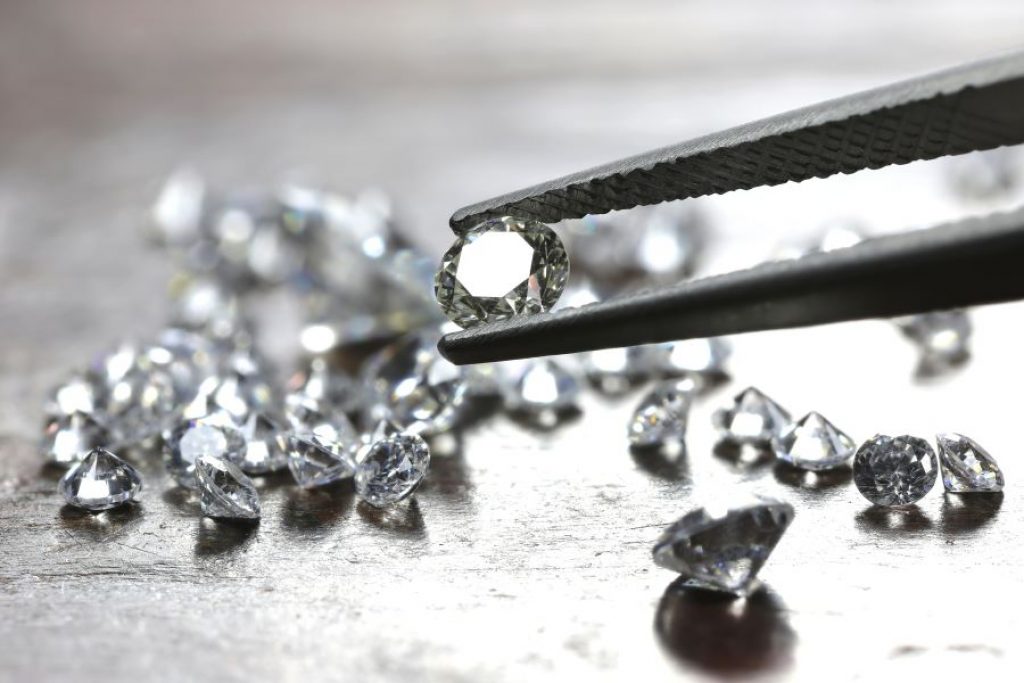
Differences Between Mined and Lab Made Diamonds
There is a famous saying that all that glitters is not gold. It can also be said that not all that sparkles is a diamond. Just like gold, diamonds have been long valued for their desirable characteristics and their scarcity. However, in recent times, there are a few different kinds of “diamonds” available in the market.
Related Topics (Sponsored Ads):
Traditional diamonds are real gem stones that are formed inside the earth and removed from the earth to be made into jewelry via mining operations. These diamonds are very valuable because of their qualities of pleasing appearance, hardness, durability and that they are scarce – they aren’t just ‘laying around’. All this has made diamonds an expensive item and high demand item for use in quality and special jewelry – especially for engagement rings and wedding bands.
Newer kinds of diamonds are made in an industrial lab and have been for a while. However, these used to be just simulated (copycat) diamonds used in jewelry and manufactured diamonds used for industrial purposes. Recently, these labs have been manufacturing (growing) diamonds that are almost identical to the traditional diamonds mined from the earth. This has caused some confusion and controversy among both sellers and buyers of diamond jewelry, revolving around which kind of diamond is better and the differences – which will be discussed below.

The Three Different Kinds of Diamonds
Natural – Traditional mined gem stones made in the Earth and removed by mining, which are then cut, shaped and polished in to jewelry quality diamonds.
Manufactured – Diamond stones that are made (also known as ‘grown’) in an industrial lab, which are then cut, shaped and polished like natural diamonds.
Simulants – Copy cat stones that have the appearance of real diamonds, typically cubic zirconia, that are also manufactured in industrial labs.
Price and Value Differences
This is the area where there is the biggest differences between the kinds of diamonds. Natural diamonds are by far the most expensive. Often, they will be double the price of a very similar manufactured diamond. Therefore, in terms of diamond size and appearance, you can get much more for your money with a manufactured diamond. Cubic zirconia stones are by far the cheapest, as they do not have the quality of the others, nor are they really diamonds (made from carbon) like the others.
In terms of value, natural diamonds are the champions. They will keep much of their original monetary value over time (and sometimes even appreciate in value). In stark contrast, manufactured diamonds very often lose most of their value very quickly – often only getting pennies on the dollar if resold. The bottom line is that since the supply of manufactured diamonds is much more abundant than natural diamonds, economics causes the price of manufactured diamonds to be less than natural stones.
Physical Qualities (4 C’s)
Cut:
While manufactured and natural diamonds appear virtually identical to the eye, manufactured stones are often not cut to the same quality as natural diamonds. Both kinds of stones come in a wide variety of shapes and designs.
Color:
Most natural diamonds are clear or white, with the more rare colored stones being more expensive. Manufactured diamonds can purposely be made with varying colors, but colored natural stones usually have a more pleasing hue and appearance.
Clarity:
A flawless diamond is extremely rare, except for cubic zirconia simulated stones. However, one of the ways a diamond expert can tell the difference, is that manufactured diamonds have more noticeable inclusions (usually with magnification) compared to natural diamonds. Also, manufactured stones often are marked to identify them as lab made and this can cause detrimental reflections in the stone.
Carat Size:
Due to their much lower price, the supply and availability of larger sized manufactured diamonds is greater than for natural stones.
Other Physical Differences
Basic composition: Both natural and manufactured diamonds are made from carbon, while cubic zirconia is a separate kind of gem stone and not made from carbon.
Hardness: Both natural and manufactured have the highest hardness rating of “10” and therefore both can cut glass. Cubic zirconia is not as hard.
Durability: Natural and manufactured diamonds are very durable – they are very hard to damage or discolor. Again, cubic zirconia is not as durable and is infamous for ‘yellowing’ over time.
Other Considerations
When buying diamond jewelry, you must be very careful to make sure you are getting what you pay for. Natural diamonds, especially due to their much higher price, are too often involved in issues of fraud. Because you can’t tell the difference between natural and manufactured just by looking at them, you should only buy natural diamonds from a reliable source, that will supply you with an official grading report of the jewelry piece. If possible, you should have an independent diamond appraiser examine the diamond jewelry before you buy it.




